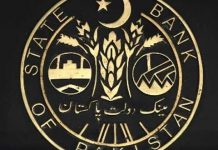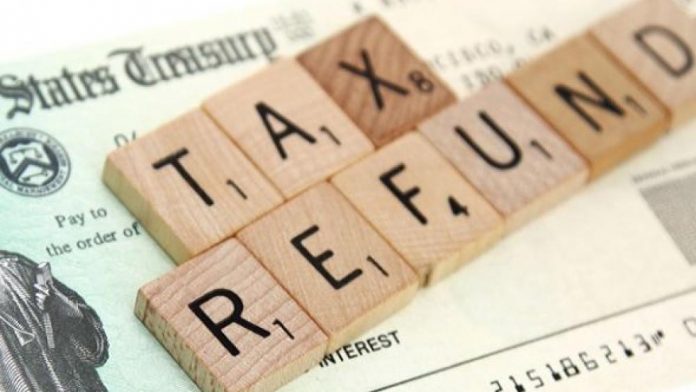The federal minister of finance Muhammad Aurangzeb announced late last month that the government had refunded almost Rs 68 billion to different sectors, as part of the tax refund program that began on July 1. He said this while addressing a press conference in Islamabad.
It was elaborated that the program has not yet concluded and Rs 68 billion is the figure that had been paid as of 28th July 2024.
This gives rise to a few questions, why is the government paying back money? And more importantly, why are people paying extra taxes in the first place?
To answer these questions, it must first be established that each working citizen, including businesses, is required to file a tax-return annually. The “tax return” is a form sent to the government containing details of their income, credits, deductions and owed tax. When the fiscal year 2022-23 ended on June 30 2023, as per normal practice corporate businesses were given 6 months until December 31, 2023 to file their tax returns.
The Anatomy of an Income Tax Refund:
Ideally the amount owed and paid should net zero but realistically that is not the case. Either citizens underpay or overpay their taxes.
If a person or an entity underpays their taxes, they must pay the full value of the tax at the time of filing their tax return, sometimes along with a penalty. However, if they end up paying more than what they should, they can ask for a tax refund.
Contrary to popular belief, it must be noted that tax refunds aren’t and shouldn’t be categorized as “free money”. In fact, it is just the amount paid over a citizen’s tax liability. Similarly, the government is obliged to refund it, once an electronic tax return is filed and the verifications at the Federal Board of Revenue (FBR) are done.
The question that now arises is why anyone would pay tax in excess.
One of the reasons for this is that some people tend to play safe when it comes to taxes. Intuitively, paying more than required, and then receiving a refund is a better option than paying a penalty. But in the case of Pakistan, the main reason why people and especially businesses end up paying more taxes than they are supposed to is due to the way our tax regulations and the tax recovery mechanism is structured.
Take a salaried employee for example. An employer withholds a specific amount, as notified each year by the Federal Board of Revenue (FBR) from the employee’s income(salary), which the employer then deposits with the FBR as income tax on behalf of the employee. The employer assumes that the employee has not already paid any income tax on this salary, and hence deducts the full amount prescribed by FBR.
But in reality, almost all Pakistani citizens end up paying advance taxes on their income at multiple stages.
When they pay their mobile phone bill, the company deducts an amount as advance income tax from that money. Likewise, when they pay their child’s fee, the school charges the same, and then hands the money to the government. The same happens when they book flight tickets or pay for other utilities etc.
In this way schools, mobile companies, airlines etc act as tax collectors for the Federal Government. So when it is time for citizens to file tax returns, they are supposed to take into account all the money these companies took as tax, along with the income tax paid by their workplace on their behalf. They come to the conclusion that they have paid more than their tax liability.
When this occurs, they become eligible for a refund. An application, called a refund application, is to be filed with the FBR in this circumstance. The board reserves the right to accept or reject the application whereas the applicant can always ask for a review of the board’s decision.
Similarly, in the case of businesses, a business is obliged to pay advance quarterly payments throughout the year, in accordance with their income tax liability from the previous year. In case the profits (income) made in the present year turn out to be less than those made the year before, the tax liability reduces making them eligible for a refund.
How big an achievement is this?
While talking at the presser, the finance minister stressed how the government had successfully returned tax refunds worth Rs 68 billion. To put this number in context, according to a May 2024 report published in Business Recorder, FBR’s data had revealed that the income tax refunds processed and disbursed through FBR’s system in the last 36 months (March-2021 to April-2024) stood at only Rs 73 billion. This means under the new finance minister FBR processed almost the same amount of refunds in a month that it did combined in the last three years. As per the same report more than 93,000 income tax refund applications had not been cleared till May 2024, which technically speaking is illegal on part of the government.
Why the delay?
These excess taxes are actually beneficial for the government regardless of whether they (unlawfully) sit on them or refund them. This is because these taxes paid above a citizen’s tax liability act as a loan to the government without any cost (interest). This benefit increases significantly in a high interest rates environment.
A way to look at this is that by withholding tax refunds worth Rs 10 billion for 6 months or more, the government profits by at least Rs 1.1 billion (as per 22% policy rate during Dec23-Jun24). In the case of Rs 68 billion, this figure exceeds Rs 7 billion.
“Once the tax is refunded, “businesses operate more effectively, investing in growth due to their enhanced liquidity,” said the finance minister during his presser.
Meanwhile, it must be noted that the FBR held back over Rs 400 billion in tax refunds to reduce the shortfall in the fiscal year 2023 alone despite the IMF’s concerns.
Other issues with tax collection
The finance minister also stressed upon the issue of the sales tax fraud, where Rs 600 billion was identified as fake and only Rs 1 billion was recovered. Moreover he revealed that “there was a deficit worth Rs 50 to 200 billion in custom taxes due to misclassification and under-invoicing.”
Misclassification, a form of tax evasion, occurs when imported goods are categorized into incorrect groups such that the customs duty on the product is lowered. This lessens the amount of tax which is to be paid on the goods and creates a deficit in customs taxes.
Under Invoicing, on the other hand, refers to when the price of a product on an invoice is reported as being lower than the price paid. This is done to disguise its true value, and minimize tax. In a report by the Pakistan Reader, during the fiscal year 2022-2023 annual tax evasion was estimated to approximately Rs 5.8 trillion.
“We are aware of the unfortunate situation at this point in time but we will need to get by until it gets better,” assured Aurangzeb.
Additionally, he also discussed the crucial need for a centralized platform to deal with the problem of non-filers.
“It is crucial for the undertaxed and untaxed to pay taxes,” Aurangzeb stressed on the need for citizens to raise their voices regarding this.
He also discussed the Tajir Dost Scheme which would present an opportunity for unregistered retail businesses to join the tax system and potentially receive benefits as well. Only 300,000 of 3.5 million retailers actively file their tax-returns. However they have high hopes of this improving as the FBR claims that the membership of Tajir Dost Scheme has risen to 17,000 as it has recently expanded it to 42 instead of 6 cities.
Digitalization of the scheme was, as the finance minister believes, a pivotal part in amending the flaws within and in regards to the tax authority. “There are 4.9 million tax filers on the income tax side and their tax data was already available through various channels, including the National Database and Registration Authority (NADRA),” he stated.
“Because of data analytics, it will also confirm the veracity of the data,” he said, “Neither one of us can blame each other then.” According to him, without cooperation in this sector, the tax net will never be able to undergo the exponential increase the government is hoping for.
“It will be unsustainable until trust and credibility are restored within the tax authority, as they will create many issues for our plans of simplification in the long term,” he stated.
Pakistan is looking to increase its total income tax by almost 48% in the upcoming fiscal year. While that is a huge ask, almost double the amount of taxes collected in FY23, the government believes that new measures to encourage people to file, coupled with timely payment of tax refunds will help the FBR meet that goal.
How bad is Pakistan’s fiscal situation?
On June 12, the budget for the fiscal year 2024-2025 was settled on and it totalled up to Rs 18.9 trillion. Only last year, it was Rs 14.46 trillion and still remained in a deficit of Rs 6.9 trillion.
The finance bill, accompanying the bold budget, targets ambitious tax returns through new policies and expenditure adjustments.
However, for a country where only 5 million out of 240 million pay taxes, public debt stands at 67.5 trillion and it is almost 3 quarters of the state’s economic output, there is a lot of wariness attached to the budget.
Each fiscal year, the Federal Government of Pakistan devises a budget relating to its expenditures and revenues. In the case of a budget deficit, also called the fiscal deficit, the expenditures exceed the revenue, however in a surplus, it is the opposite.
The budget for this year has totalled up to Rs 18.9 trillion, which is the amount estimated to be spent this fiscal year.
This year the government has set a target of around Rs 13 trillion for itself against tax revenue and Rs 5 trillion against non tax revenue, resulting in a total figure of Rs 18 trillion. Now assuming the government would achieve this, the revenue would have been only slightly short of the estimated expenditure. But as per the NFC award, which deals with the division of resources between the federation and provinces, the Federal Government’s responsibility is not only to look after their own affairs, but also to allocate resources to the provinces.
So of the Rs 18 trillion in targeted revenue, approximately Rs 7.5 trillion will need to be divided amongst the provinces, leaving an amount only slightly more than Rs 10 trillion for the Federal Government.
The issue however, is that the federal government has budgeted the total expenditures at close to Rs 19 trillion. This leaves a shortfall of Rs 8.5 trillion, that the government needs to finance from somewhere else.
This is done mainly through domestic bank borrowing, and partly by non bank borrowing from citizens through National Saving Schemes.
Other than domestic borrowing the government also finances a small part of this deficit by taking foreign loans and by selling some government owned assets like PIA.
However, Interestingly enough, out of the total expenditure of Rs 19 trillion, almost Rs 10 trillion is made up of interest payments on loans already taken. Taking more loans every year would only make the situation worse.
Despite heavy borrowing, after paying for interest, pensions, and armed forces, etc. the federal government is left with only Rs 1.4 trillion to spend on Public Sector Development Programs (PSDP).
According to recent reports, Ahsan Iqbal, the Federal Minister for Planning has revealed that of the insufficient budget set aside for PSDP, a further cut of Rs 400 billion may be approaching as a result of the current budget shortfall.






















